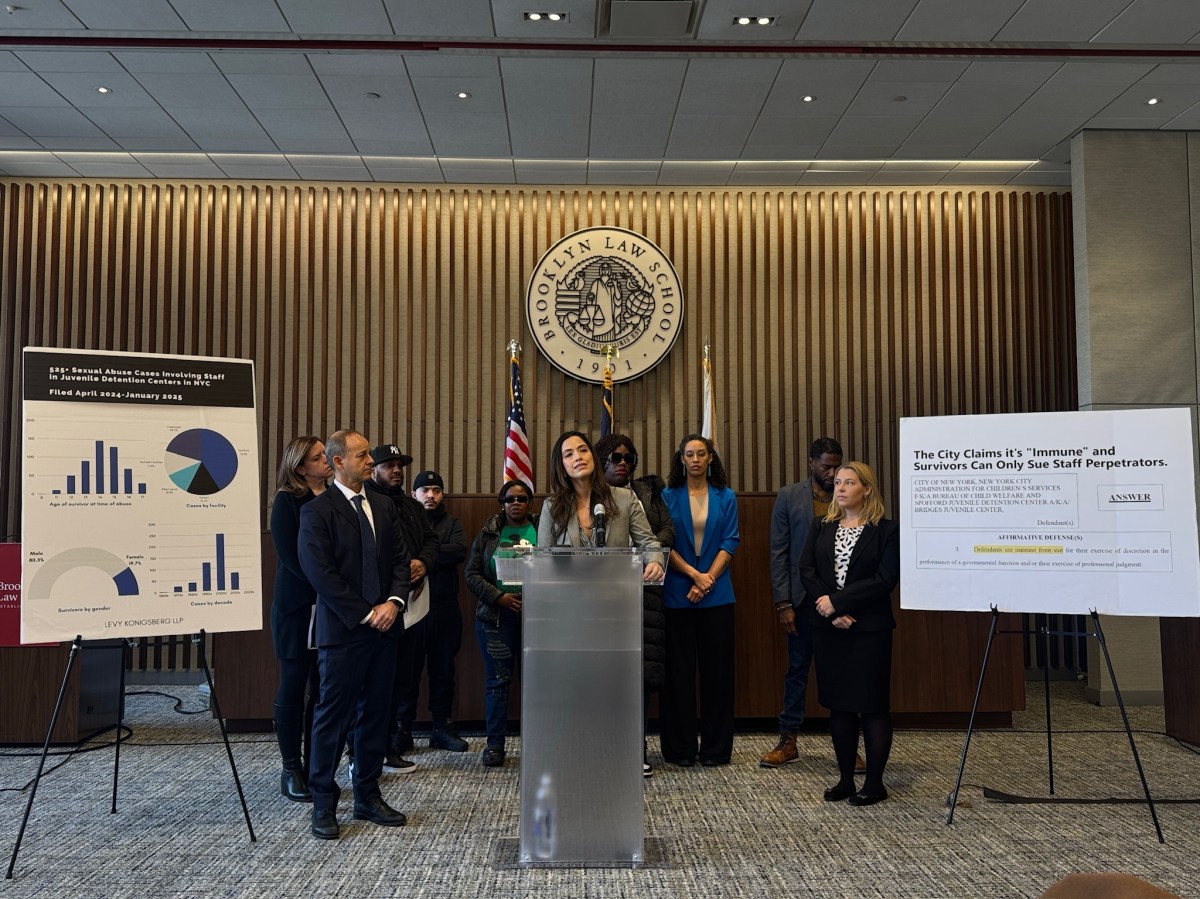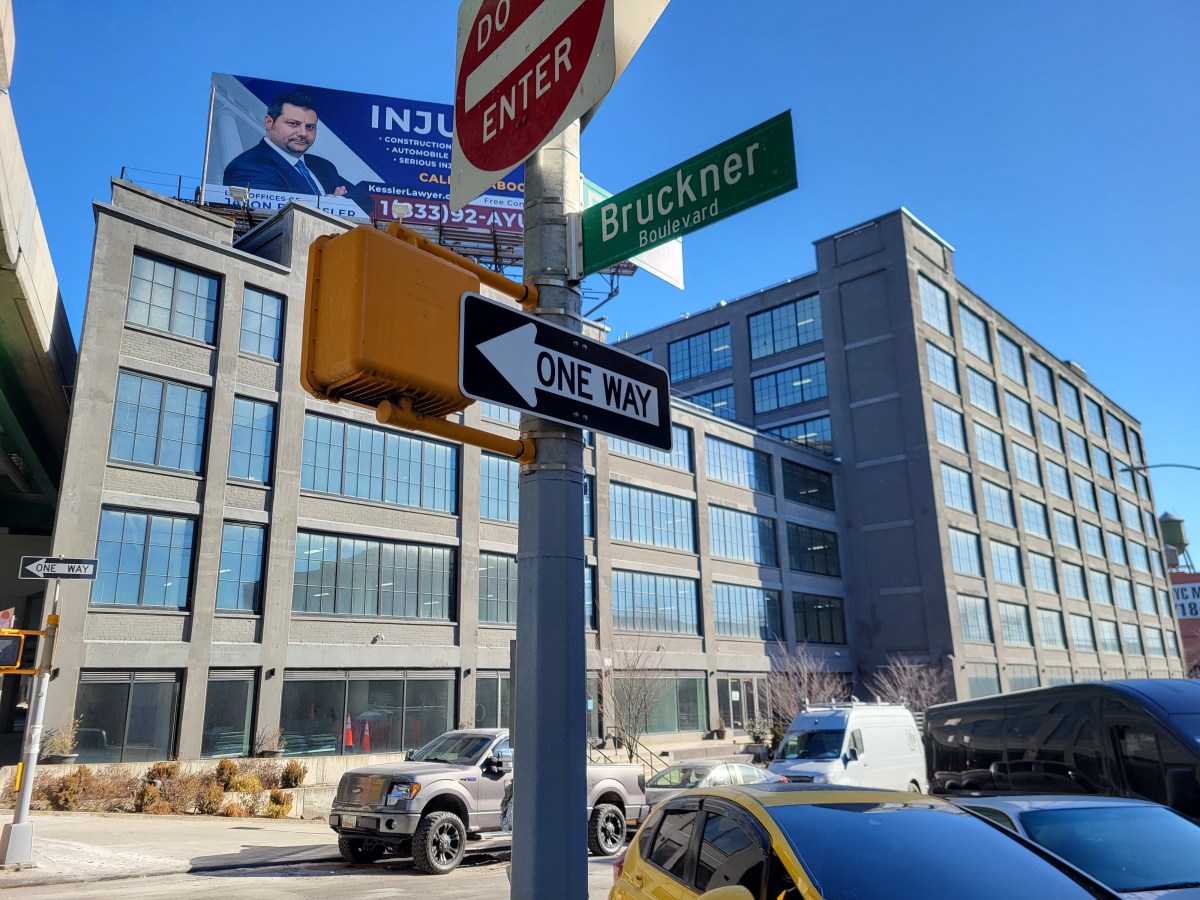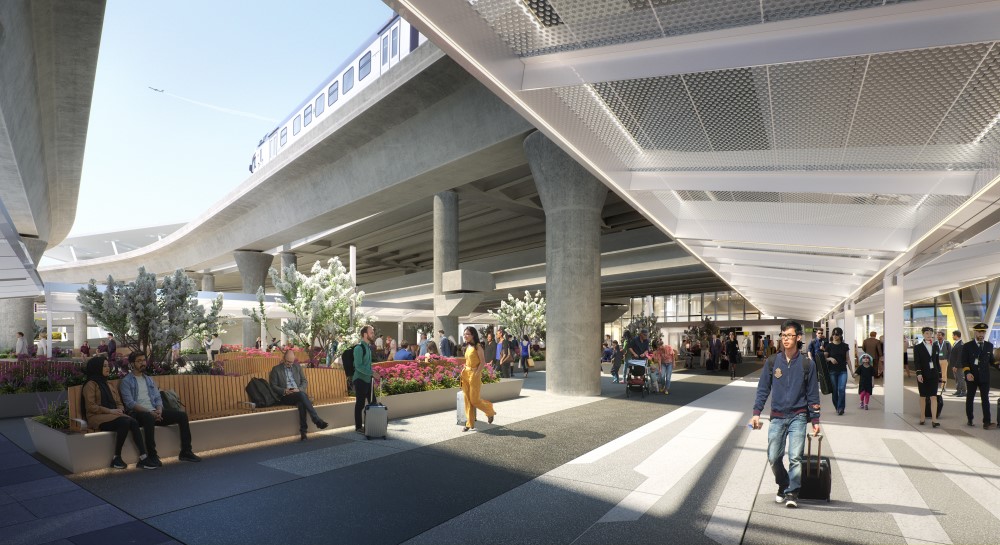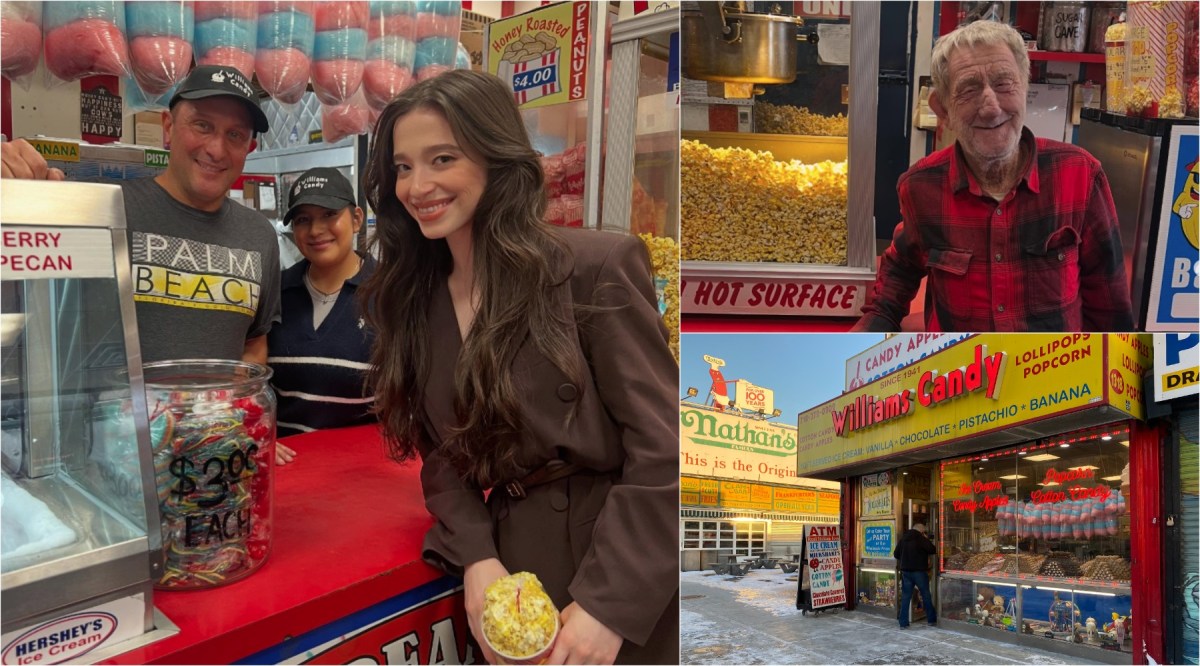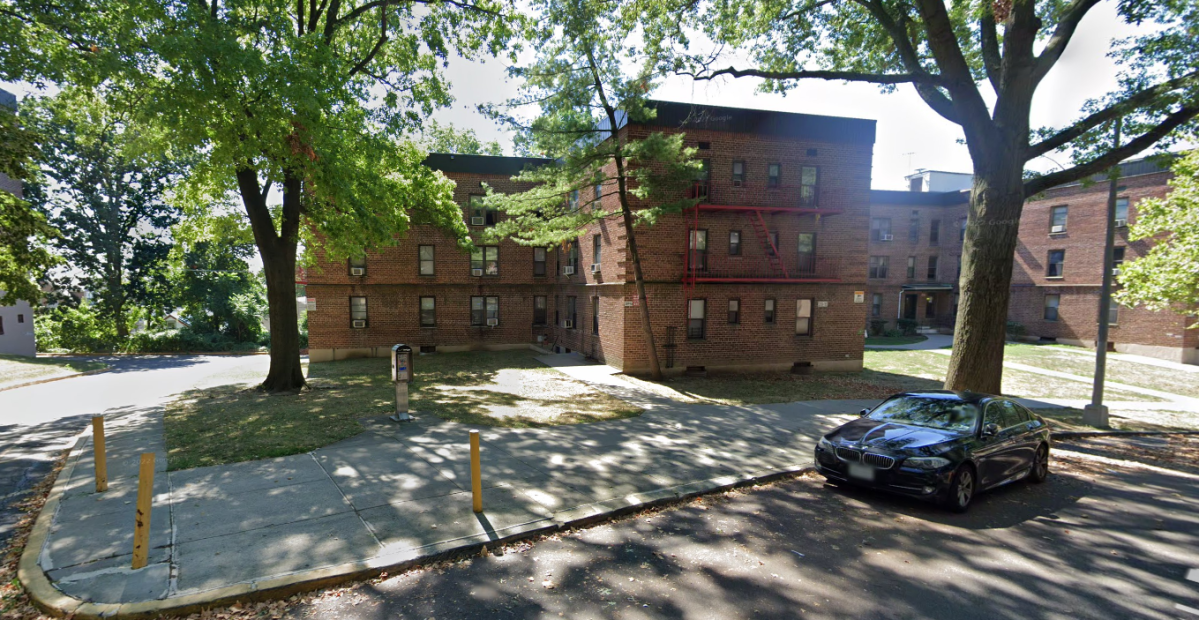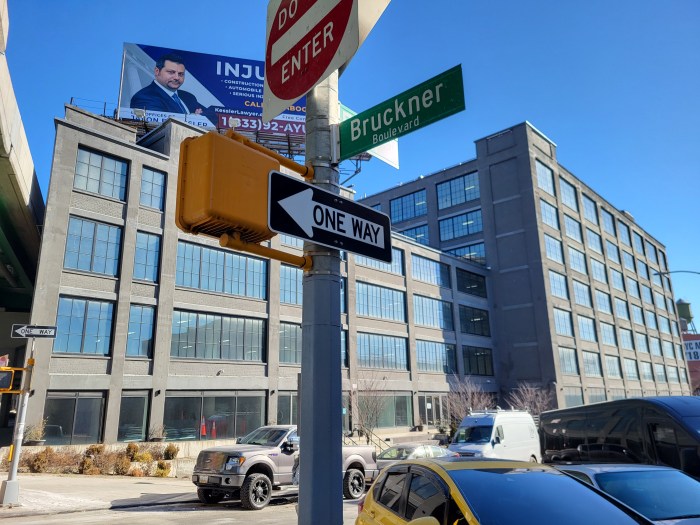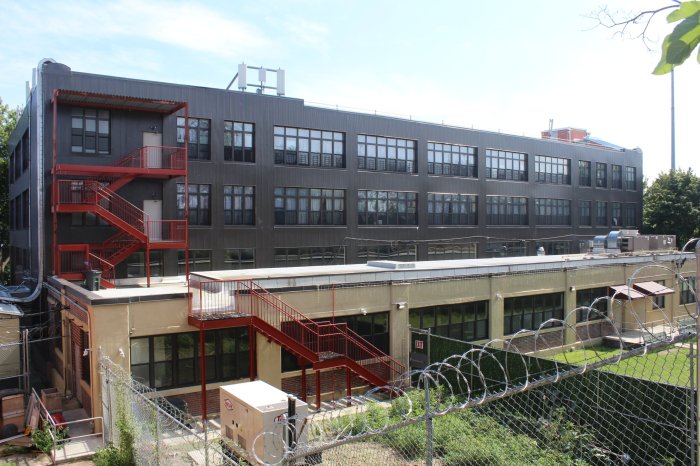-
 Punch Bar & Grill
Punch Bar & Grill913 Broadway
Dine on a menu of bold, international flavors and indulge in the wine bar.
Blue Smoke (pictured)
116 E. 27th St.
Craving Southern comfort food? At Blue Smoke, you’ll find pulled pork, cornbread and macaroni and cheese.
Rye House
11 W. 17th St.
The spot for classic American cuisine, from small bites like white truffle popcorn to Mama’s Fried Mac’n’ Cheese, along with beer, wine and cocktails.
” data-id=”112634403″ data-link=”https://amnewyork.wpengine.com/wp-content/uploads/2019/10/41_image.png” class=”wp-image-1.12634403″/>Photo Credit: Linda Rosier -
 230 Fifth Rooftop Bar (pictured)
230 Fifth Rooftop Bar (pictured)230 Fifth Ave.
Enjoy a delicious array of cocktails, such as the fall-appropriate pumpkin patch martini, at this upscale lounge and bar (no cover charge).
The 40/40 Club
6 W. 25th St.
Watch all your favorite sports teams play at this luxury sports bar co-owned by Jay-Z. The multiple private rooms are perfect for large parties.
SPiN New York
48 E. 23rd St.
Head over to this vibrant lounge for a night of live music, Ping-Pong (there are 17 tables) and a full bar.
” data-id=”112634397″ data-link=”https://amnewyork.wpengine.com/wp-content/uploads/2019/10/42_image.png” class=”wp-image-1.12634397″/>Photo Credit: Linda Rosier -
 Peoples Improv Theater
Peoples Improv Theater123 E. 24th St.
Enjoy improv shows, take educational workshops and join the writing program at this award-winning comedy club.
Metropolitan Room (pictured)
34 W. 22nd St.
Whether you’re a jazz fan or a professional musician in need of a venue, this can be your new go-to.
Bikram Yoga NYC
182 Fifth Ave.
The company’s Flatiron location is a 1,500-square-foot studio and hosts up to 12 hot yoga classes a day.
” data-id=”112634669″ data-link=”https://amnewyork.wpengine.com/wp-content/uploads/2019/10/43_image.png” class=”wp-image-1.12634669″/>Photo Credit: Linda Rosier -
 Showplace Antique + Design Center (pictured)
Showplace Antique + Design Center (pictured)40 W. 25th St.
Hobbyists and collectors will enjoy browsing through the catalog of antiques, classic furniture, decorative art and much more. There are also monthly live auctions.
Books of Wonder
18 W. 18th St.
One of NYC’s few remaining independent children’s bookstores. It provides a wide selection that also includes artwork and signed copies of first edition books.
Abracadabra NYC
19 W. 21st St.
Theater enthusiasts can find costumes, theater makeup and props all in one store.
” data-id=”112634612″ data-link=”https://amnewyork.wpengine.com/wp-content/uploads/2019/10/44_image.png” class=”wp-image-1.12634612″/>Photo Credit: Linda Rosier -
 Trains:
Trains:N, R, 6 to 28th Street
F, M, Path, N, R, 6 to 23rd Street
N, Q, R, L, 4, 5, 6, F, M, Path to 14th Street
R to 14th Street-Union Sq, 23rd Street, and 28th Street
W to 14th Street-Union Sq, 23rd Street, and 28th Street
N, Q to 14th Street-Union Sq
L to Sixth Avenue, 14th Street-Union Sq
4, 5 to 14th Street-Union Sq
6 to 14th Street-Union Sq, 23rd Street, 28th Street
F, M to 14th Street, 23rd Street
Buses:
M1, M2, M3, M5, M7, M14A, M14D, M23, M101, M102, M103
” data-id=”112634675″ data-link=”https://amnewyork.wpengine.com/wp-content/uploads/2019/10/4069_image.jpg” class=”wp-image-1.12634675″/>Photo Credit: Samantha Wieder -
 Median sales price: $1,893,934
Median sales price: $1,893,934
Number of units on market: 632
Median rent price: $4,578
Number of rentals on market: 2,288
(Source: StreetEasy)
” data-id=”112634583″ data-link=”https://amnewyork.wpengine.com/wp-content/uploads/2016/11/image-5.png” class=”wp-image-1.12634583″/>
Photo Credit: Linda Rosier -
 The Flatiron District has earned several nicknames throughout its history. Before getting its current name in the mid-1980s, it was called the Photo District due to an abundance of photographer studios like Duggal Visual Solutions.
The Flatiron District has earned several nicknames throughout its history. Before getting its current name in the mid-1980s, it was called the Photo District due to an abundance of photographer studios like Duggal Visual Solutions.Before that, many toy manufacturers were based in the area and the American International Toy Fair was held here, giving it the name the Toy District. The Ladies’ Mile Historic District was created by the NYC Landmarks Preservation Commission in 1989 to preserve the location of a shopping district in the late 1800s.
Today, in addition to being named after the Flatiron Building, an iron-shaped building built in 1902 (once known as the Fuller Building), the district is also known as “Silicon Alley” thanks to the birth and migration of many tech startups in the area. Some also like to call it the Fit District because of the nearly 50 fitness gyms and studios based here.
” data-id=”112634609″ data-link=”https://amnewyork.wpengine.com/wp-content/uploads/2019/10/45_image.png” class=”wp-image-1.12634609″/>Photo Credit: Linda Rosier -
 The Flatiron/23rd Street Partnership Business Improvement District (BID) is working with the city to make four public plazas between 21st and 24th streets permanent.
The Flatiron/23rd Street Partnership Business Improvement District (BID) is working with the city to make four public plazas between 21st and 24th streets permanent.The plazas, including a 16,000-square-foot space at the intersection of Broadway and West 23rd Street in front of the Flatiron Building, were developed by the Department of Transportation beginning in 2008 as an experiment to see whether the community would benefit from them.
Jennifer Brown, executive director at the BID, said the plazas make the neighborhood look nicer and improve pedestrian traffic between the streets.
Sarah Parker, 23, was spending time in the plaza at Broadway and West 23rd Street recently. She said she visits the public plazas at least four times a week to study and hang out with friends.
“I feel like it’s a better place to meet up than the park because there are tables and chairs here, instead of just benches,” said Parker, a two-year resident of Flatiron District and a graduate student studying nutrition at Touro College, which is also on West 23rd Street. “Also, it’s really convenient since I live right across the street. I study outside when the weather is nice.”
Residents attended a workshop with the DOT and the Madison Square Park Conservancy in November 2015 to suggest improvements for the plazas, such as tables and benches as well as greenery.
Another workshop is planned for the first quarter of 2017, but specific details haven’t been released yet.
New construction on the plazas will take several years to complete, Brown said.
“The plaza project is a really big deal. For a number of years, they’ve been really well-utilized but [their materials are] wearing out,” she said. “There are some structural things we really want to upgrade, so that is certainly something that I think is important.”
The current budget allotted by the mayor’s office for public improvement projects in the Flatiron District is about $675,000, according to the BID.
” data-id=”112634590″ data-link=”https://amnewyork.wpengine.com/wp-content/uploads/2016/11/image-50.jpg” class=”wp-image-1.12634590″/>Photo Credit: Linda Rosier
The Flatiron District is known as a prime destination for shopping, nightlife and offices for tech startups, but what many don’t know is that the nabe also has a growing residential community.
The district is known for its booming commercial hub and iconic architecture, from the Metropolitan Life Insurance Company Tower near Madison Avenue to the historic Grand Madison on Fifth, to the Flatiron Building itself, after which it is named.
“It’s become a world-class neighborhood,” said Nick Athanail, 50, a real estate agent with Corcoran who’s lived and worked in Flatiron since 1995. “Culturally, it’s really evolved. It’s a great location, has access to transportation, nightlife and lots of historical beauty.”
He added that there are places to eat at every price point and no shortage of activities.
“My friends laugh at me because I spend so much time in the area,” Athanail said. “If they want me to go to a restaurant or a bar or shopping or somewhere outside the district, there’s always something closer to home for me that’s just as good, if not better.”
The area has seen an influx of major fashion, media and technology companies. For example, Sony’s headquarters — along with 2,000 employees — moved to 25 Madison Ave. earlier this year and Dropbox recently moved one of its offices to 50 W. 23rd St.
Meanwhile, Flatiron is also a major destination for retail therapy. Along Fifth Avenue are big-box vendors like Club Monaco, The LEGO Store, public plazas and Eataly, a popular Italian marketplace.
In terms of nightlife, it is known for rooftop bars like 230 Fifth, which sits at the top of a 20-story building that also houses retailers like Geneva Home Fashion and Linenstore, and Tavern29, a beer garden at the top of the two-story 47 E. 29th St.
For greenspace, locals head to Madison Square Park, which features a dog run, fall music concerts and outdoor artwork.
Due to all of its amenities, the Flatiron District is a major destination for tourists and city residents from other neighborhoods. It is accessible by 10 subway lines between 28th and 14th streets, as well as several buses.
But a residential community has been growing here in recent years, some say.
Lois Eida, 67, who has owned Lois Lane Travel at 230 Fifth Ave. for nearly 40 years, said she has seen an increase in residents first-hand.
“People didn’t live here before,” she said. “Everyone left the neighborhood at night. … Now it’s such a popular neighborhood to live in.”
But the visible affluence in the Flatiron District — as is also exemplified by the young, hip professionals strolling briskly along the avenues in expensive suits and designer accessories — is reflected in its real estate market.
According to the listings site StreetEasy, the district’s median sales price was $1.89 million in 2015, compared to $985,000 in Manhattan as a whole.
The median rent in the Flatiron District was $4,578 last year, up from $3,195 borough-wide.
The district’s housing stock mainly consists of co-ops and condo conversions, including pre-war buildings like 141 Fifth Ave., which was built in 1897 and once housed the Merchants Bank of New York, according to CityRealty. It was converted in 2009 and now has around 40 units.
In the last decade, more than 900 new rental and condos were constructed in Flatiron, and plans for another roughly 670 more are underway, according to a report released in October by the Flatiron/23rd Street Partnership Business Improvement District.
Area resident Kristel Ermel, 39, said she’s noticed that the area has gotten increasingly fancier when it comes to retail and dining, especially restaurants on Park Avenue S like Upland, which blends Italian and west coast cuisines.
As a resident, Ermel said the accessibility to retailers and services like the post office makes living in the Flatiron District very comfortable.
“It’s convenient because I work in midtown. I can walk to work,” said Ermel, a finance director who recently purchased an apartment in the Flatiron District and previously rented in the neighborhood since the spring of 2013. “Everything I want and need is right here.”




